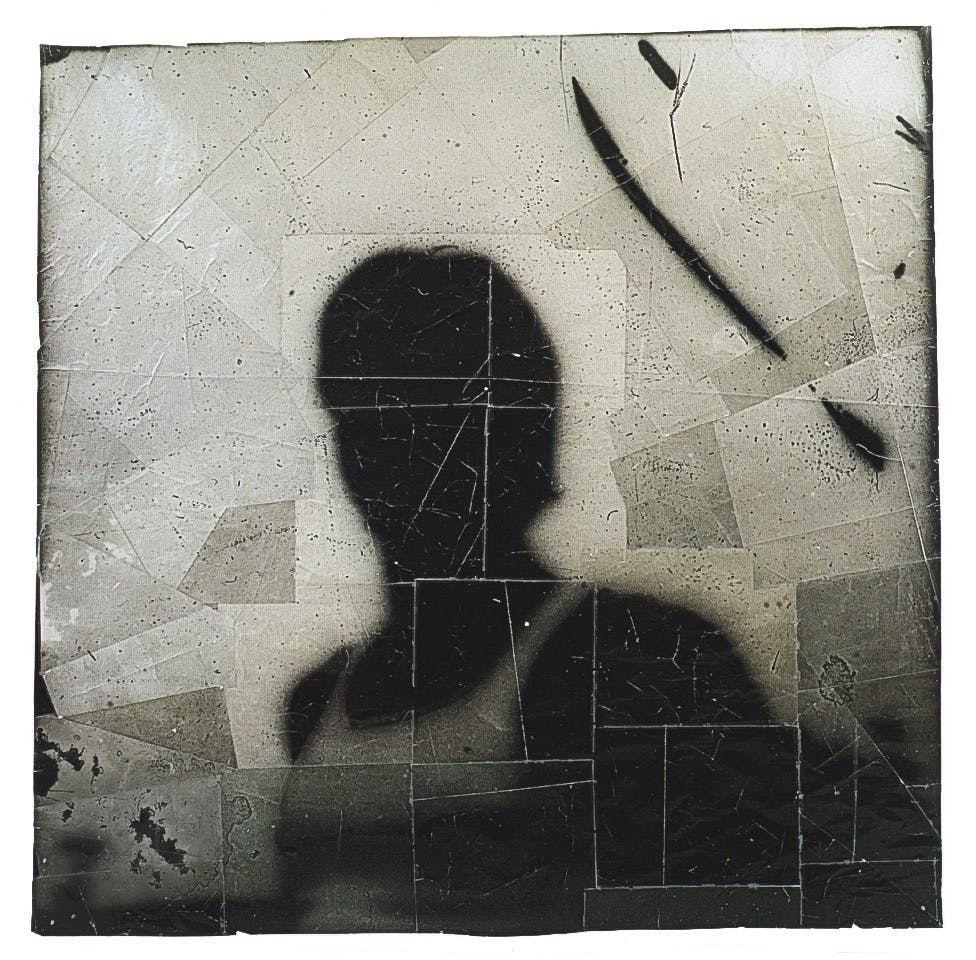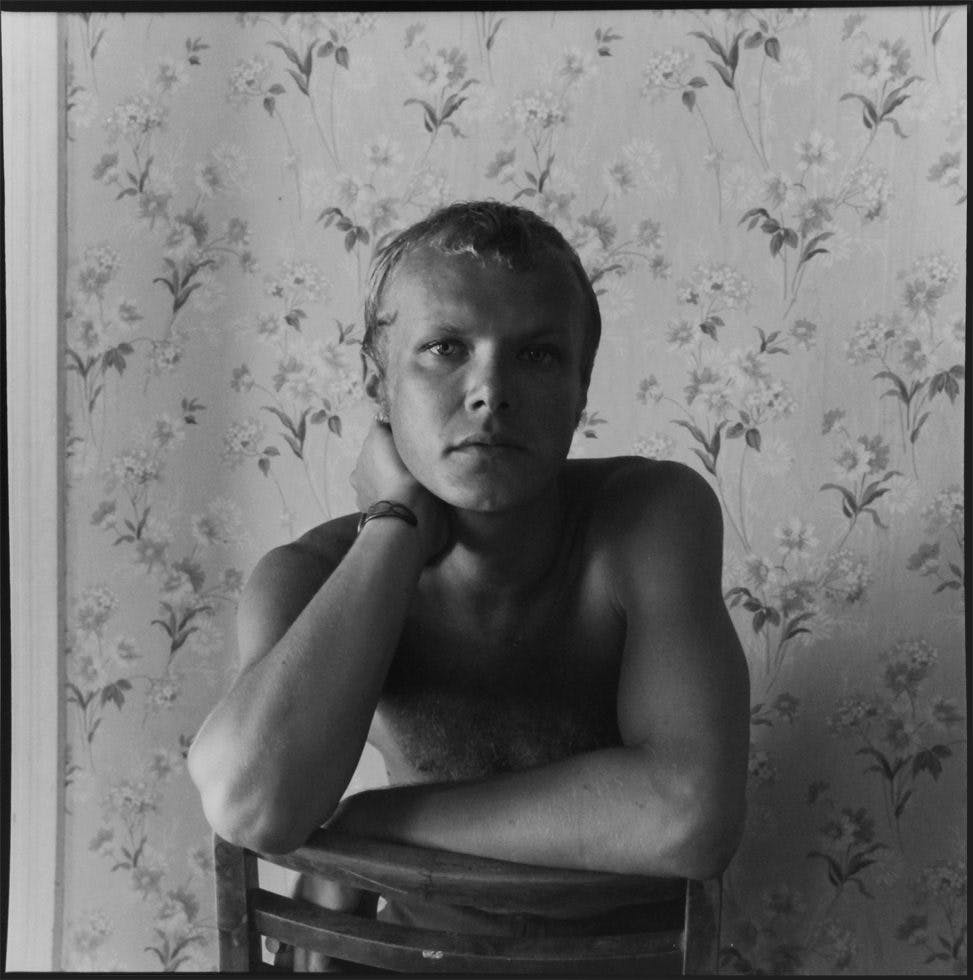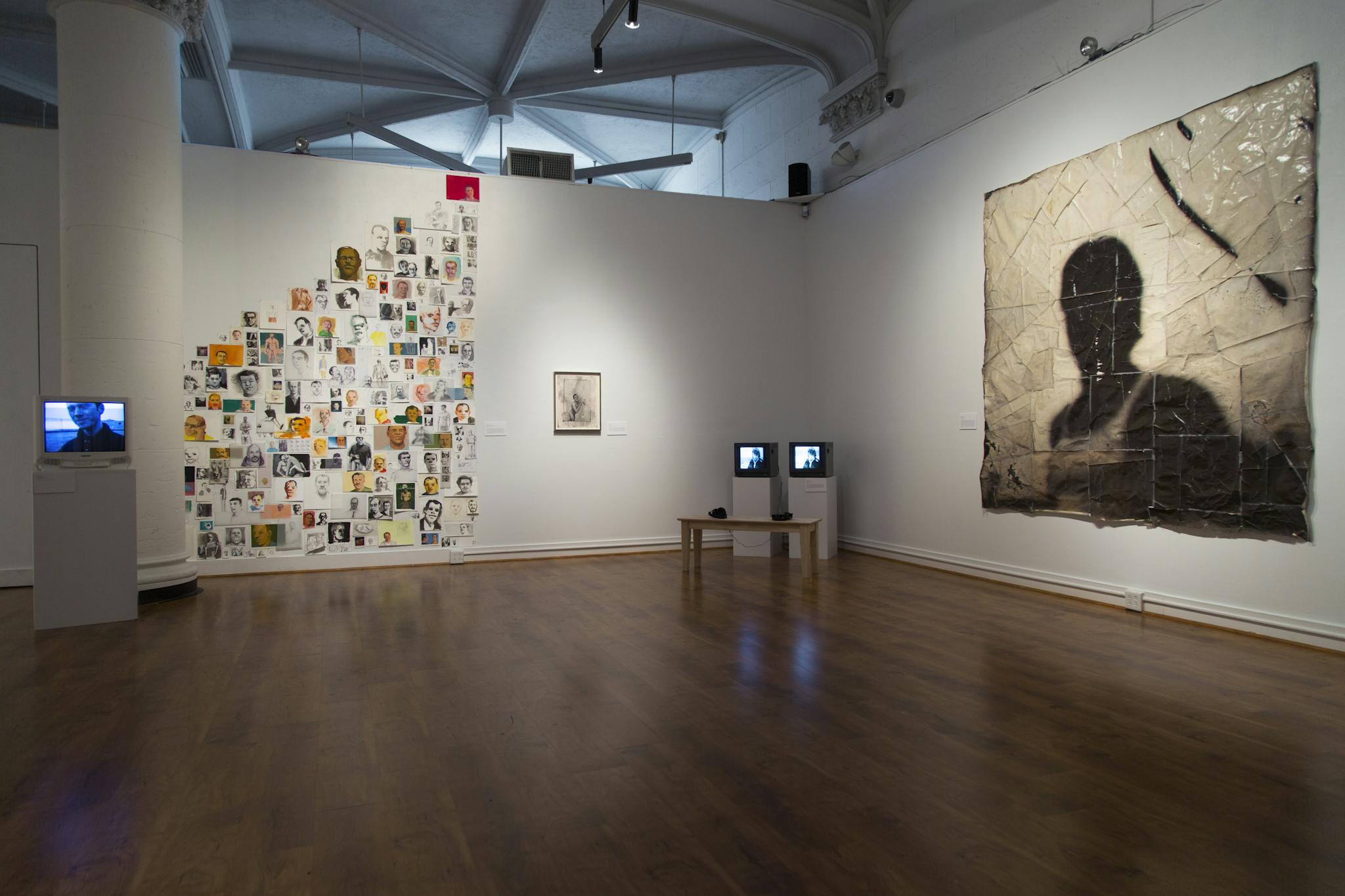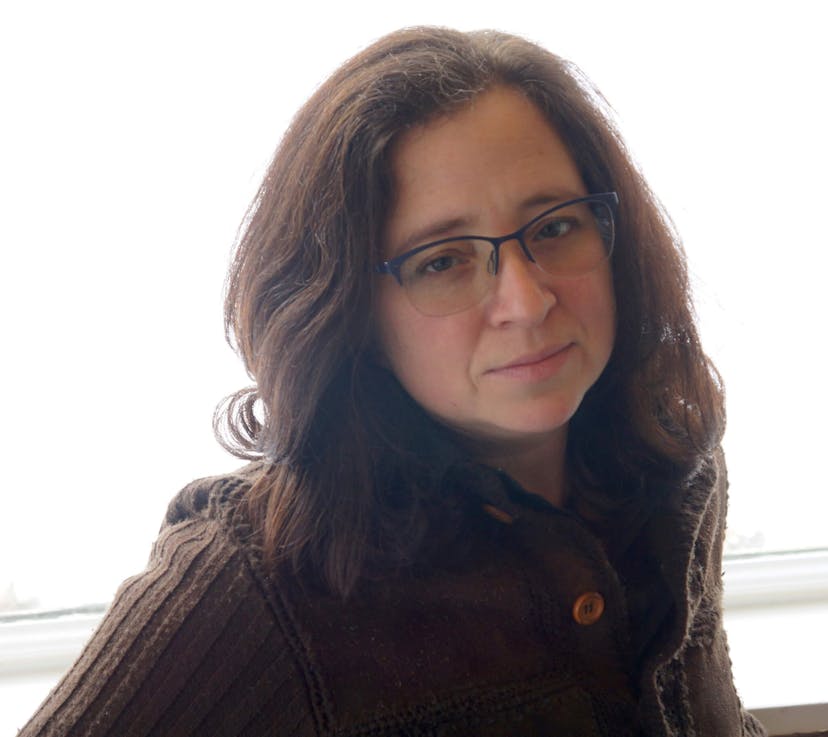Inside Boston University’s Stone Gallery, “Under a Dismal Boston Skyline,” provides an account of artists who broke away from Boston’s cultural mainstream in the 70s and 80s while examining the impact of their work today. Given the scope of work included, it is a pretty impressionistic survey, so it’s hard not to play the game of guessing why one artist was included and another was not—to see the collection through the eyes of this team with fierce attachments to the city, but no firsthand experience of the not-so-distant era the project is founded on.
Though Mark Morrisroe is a clear cut case, is Maura Jasper’s work really more “Boston School” than Bobby Busnach’s, or Luther Price’s work more emblematic of the ethos than Joe Gibbons’?
But then imagine the laborious research involved when there is no formal archive—seeking out stories of one small artist’s circle after another, trying to complete the kind of picture that social media might make cogent now, but was just Polaroids and gossip back then.

Mike and Doug Starn, “Mark Morrisroe,” 1985-86. Gelatin silver print, tape 100 x 100 inches. Collection of the artists.
The curators, Lynne Cooney, Leah Triplett Harrington, and Evan Smith, were wise to derail such questions with a heavy dose of contemporary work, inserting more interesting quandaries in their place: who is beyond institutional awareness, rooted in this place as a community, and documenting themselves now? What are the non-institutions now?
Some of the questions that the exhibition leaves open were expanded on in a panel that the gallery hosted during the final week of the show.
For the panel discussion, “By Any Means Necessary: Boston Artist-Run Spaces Through the Decades,” four representatives of Boston artist-run spaces or collectives were brought to the table to tell tales of how things used to be, and what has or hasn’t changed. The discussion went from academic to personal very quickly and there seemed to be a hunger in the audience for the kind of detail each panelist was able to offer up.
The panel opened with moderator and curator, Lynne Cooney, reeling off names of art spaces that once existed and no longer do. I didn’t hear every name she listed, but certainly some had fallen out of my consciousness and hearing them aroused memories of sounds and smells and people that drifted from this town long ago.
Meg Rotzel, the first panelist to speak, and former director of the Berwick Research Institute followed Cooney by reading through her own, three-column long list of names.
This time, names of people rang out into the space. It felt like an incantation—a filling of the vacant space in the room with a fraction of the artists missing from its walls, and also a call for an emotional connection to what this work—this “Boston School,” with a name forged in play-turned-serious, is all about.

Installation view, “Under a Dismal Boston Skyline,” 2018. Image courtesy of Boston University Art Galleries.
When things like these are hung on clean white walls, it’s hard to remember that they were made in messes: sometimes actual physical messes, sometimes interpersonal and emotional ones.
The slight crack in Rotzel’s voice takes me back to my own first meeting with her: my furtive coming out for the first time as maybe-possibly an artist, which proved to be much scarier than the other kinds of coming-outs I’d had to do in my life already; and her equally furtive and therefore instantly conspiratorial confession that she might-maybe want to become a curator or arts producer someday. And how these vulnerable admissions bonded us together as a team, and then pulled me into a whole world I’d been trying to avoid for years because of how much risk I knew it would involve. Just hearing the story of the Berwick was like going down the same rabbithole again.
Tim Bailey, Co-Founder of Oni Gallery, also has emotion right at the surface and a list of names. They whirl around the room too, familiar, and each evoking particular loft parties and performances—bands I can’t believe I saw in such intimate settings, impossibly chock-full installations, experiments gone horribly awry, people that didn’t survive, and a whole landscape that used to be a living thing but looks like a façade now.
Plus the details—the nitty gritty details: how very, very hard the work of making the Oni gallery what it was was. How lawless landlords and streetscapes used to be in Boston. How broken-hearted people always left these things in the end. And how much love FLOWED through these places, gluing everything together.
Going even farther back in time, Mike Carroll, who Co-Founded 11th Hour in the late-1970s, echoes the hard-but-fun-but-then-too-hard narrative related by Rotzel and Bailey.
It was before my time, and short lived, but I’ve still heard stories about this place. And even a few recordings of some of its legendary punk shows. What these stories mostly focused on was the fun part. They never included descriptions of how desolate Fort Point was in that historical moment. And how much exponentially more rugged the experience of being an art space was in the 80s than in the 90s. The Fort Point I remember was dirt cheap, but it was lively—with a very active nightclub and dozens of artists lofts and art spaces. The conditions Carroll describes were downright brutal: the streets basically a cruising zone (for both drugs and sex) and the lofts then essentially raw space, with everyone sleeping in a pile in the middle of the gallery because it was too cold in the winter to sleep anywhere else. I know it’s what the East Village was like at the time, but somehow it is impossible to envision such grittiness here.
Carroll articulates a crucial element to the kind of art being made in each of these spaces; it involved a kind of thinking that had nothing to do with having marketable success. “We were not avoiding the marketplace, we just explored our own curiosities. We were like a tribe. We did not live in a transactional culture.”

David Armstrong, “Jeff Kresser,” Provincetown, 1977. Gelatin Silver Print 20 x 16 inches. Private collection. Image courtesy of ClampArt, New York City.
Marilyn Arsem, Co-Founder of Mobius, the only still-extant arts collective represented here, does not read a list of names or talk about the physicality of developing space fueled by Shlitz beer, drywall and artistic camaraderie. Instead, she talks about evolving organizational principles and making a place for multi-modal art practices that transcend any individual space. 43 years into Mobius’ existence, she passes around newsletters from the group’s first 20 years of existence, notable in that they didn’t even have dates on them until 1984, and tells stories about the brightest and darkest days of the National Endowment for the Arts (“the culture wars”) from an experimental artist’s and activist’s perspective.
During the question and answer segment of the event, there is a frank discussion about the sexist, bullying culture in Boston’s Inspectional Services and Fire Departments—how ancient the (still equally soul-crushing) attitudes are; about the kind of communication that is bred by spending actual, bodily time together all the time; and the value of finding space where you can “just do whatever you want” and freely learn things by trial and error.
With regard to the art in the room and the expansive body of work that came out of these artist-led endeavors, Bailey, whose pain over the undermining of Oni is still viscerally palpable, is certain that “the struggle to make things work is what makes the work so good.”

Installation view, “Under a Dismal Boston Skyline,” 2018. Image courtesy of Boston University Art Galleries.
“Under a Dismal Boston Skyline” was on view September 14 through October 28. The panel discussion, “By Any Means Necessary: Boston Artist-Run Spaces Through the Decades” was held on Wednesday, October 24 inside the Faye G., Jo, and James Stone Gallery at Boston University. Panelists included:
Marilyn Arsem, Founder, Mobius Inc., member of Mobius Artists Group (1975-present)
Mike Carroll, Co-Founder, 11th Hour Gallery (1979-1981)
Timothy Bailey, Co-Founder, Oni Gallery (1997-2005)
Meg Rotzel, Co-founder and Director, Berwick Research Institute (2001-2012)
Moderated by Lynne Cooney and Leah Triplett Harrington





